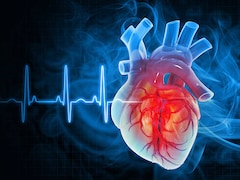Early childhood exposure to traffic-related air pollution (TRAP) is associated with structural changes in the brain at the age of 12, reveals study.

New study highlights harmful effect of pollution on brain development in children
According to a recent study, early childhood exposure to traffic-related air pollution (TRAP) is associated with structural changes in the brain at the age of 12.
The Cincinnati Children''s Hospital Medical Center study found that children with higher levels of TRAP exposure at birth had reductions at age 12 in gray matter volume and cortical thickness as compared to children with lower levels of exposure.
According to Travis Beckwith, Ph.D., a research fellow at Cincinnati Children''s and lead author of the study, "The results of this study, though exploratory, suggest that where you live and the air you breathe can affect how your brain develops, while the percentage of loss is far less than what might be seen in a degenerative disease state, this loss may be enough to influence the development of various physical and mental processes."
Gray matter includes regions of the brain involved in motor control as well as sensory perception, such as seeing and hearing. Cortical thickness reflects the outer grey matter depth. The study found that specific regions in the frontal and parietal lobes and the cerebellum were affected with decreases on the order of 3 to 4 per cent.
"If early life TRAP exposure irreversibly harms brain development, structural consequences could persist regardless of the time point for a subsequent examination," says Dr. Beckwith.
The researchers on the study, which is published online in PLOS One, used magnetic resonance imaging to obtain anatomical brain images from 147 12-year-olds. These children are a subset of the Cincinnati Childhood Allergy and Air Pollution Study (CCAAPS), which recruited volunteers prior to the age of six months to examine early childhood exposure to TRAP and health outcomes.
The volunteers in the CCAAPS had either high or low levels of TRAP exposure during their first year of life. The researchers estimated exposure using an air sampling network of 27 sites in the Cincinnati area, and 24/7 sampling was conducted simultaneously at four or five sites over different seasons. Participating children and their caregivers completed clinic visits at ages 1, 2, 3, 4, 7 and 12. (ANI)
(This story has not been edited by NDTV staff and is auto-generated from a syndicated feed.)
DoctorNDTV is the one stop site for all your health needs providing the most credible health information, health news and tips with expert advice on healthy living, diet plans, informative videos etc. You can get the most relevant and accurate info you need about health problems like diabetes, cancer, pregnancy, HIV and AIDS, weight loss and many other lifestyle diseases. We have a panel of over 350 experts who help us develop content by giving their valuable inputs and bringing to us the latest in the world of healthcare.














